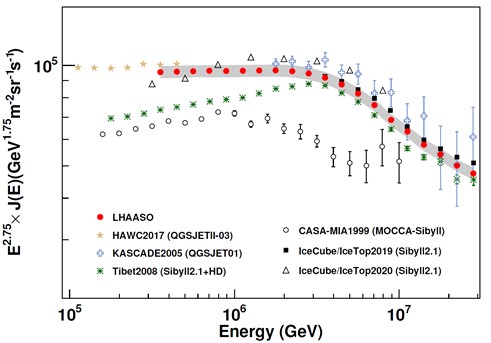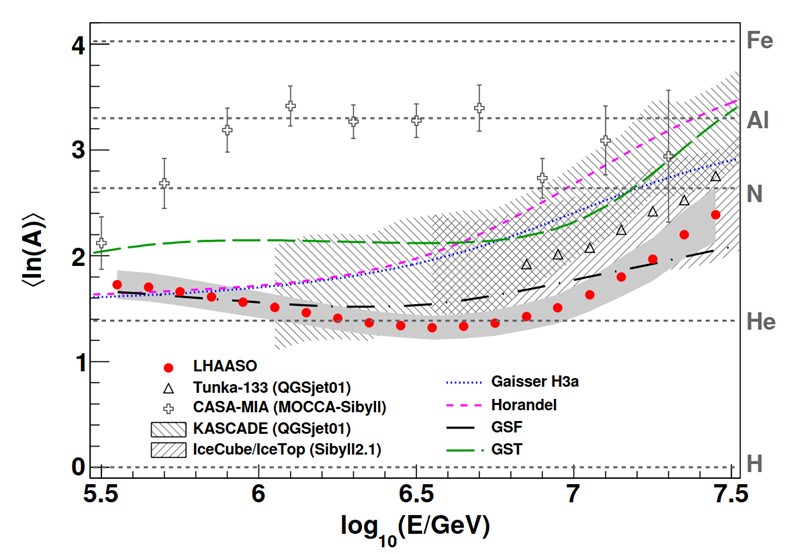

Researchers used LHAASO-KM2A experimental data from September 2021 to December 2022 to measure the cosmic ray all-particle energy spectrum and mean logarithmic mass in the “knee” region with unprecedented precision. They not only attributed the knee to the light components of cosmic rays, i.e., protons and helium, but also made a groundbreaking discovery of an elbow-like feature—a reversal of the spectrum knee—in the mean logarithmic mass for the first time. The LHAASO findings shed new light on the origin of the knee, which has perplexed scientists for nearly 70 years since its initial discovery. Reviewers described these findings as a “significant milestone in the field.”
Researchers have fully utilized the significant advantages of the LHAASO experiment’s high-altitude and large-area muon detectors to achieve calorimetric energy measurements that significantly reduce the dependence of energy measurement on cosmic ray composition and hadronic interaction models in ground-based experiments. This unique technique has played a crucial role in guaranteeing the accuracy and reliability of findings.
LHAASO is a major national science and technology infrastructure located on Haizi Mountain in Daocheng County, Sichuan Province, China, at an altitude of 4,410 meters. It consists of the Square Kilometer Ground-based Array (KM2A), which comprises 5,216 electromagnetic particle detectors and 1,188 muon detectors; the 78,000 m2 Water Cherenkov Detector Array (WCDA); and the 18 Wide-field-of-view Cherenkov Telescope Array (WFCTA). LHAASO was completed in July 2021 and then put into stable operation, making it a leading international detection device with high sensitivity, powerful sky survey capabilities, and a wide energy range.

Fig 1. The “knee” feature of the cosmic ray all-particle energy spectrum, with the red dots representing the precise measurements from the LHAASO experiment.

Fig 2. High-precision measurement of the mean logarithmic mass of cosmic rays by the LHAASO experiment.
Paper link: https://doi.org/10.1103/PhysRevLett.132.131002